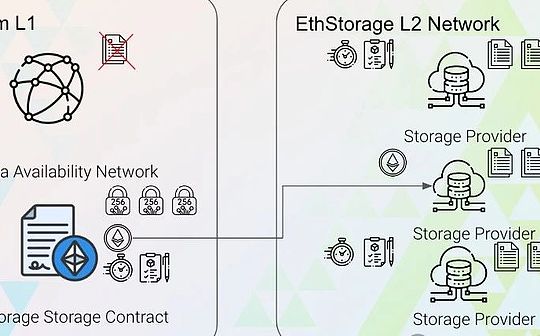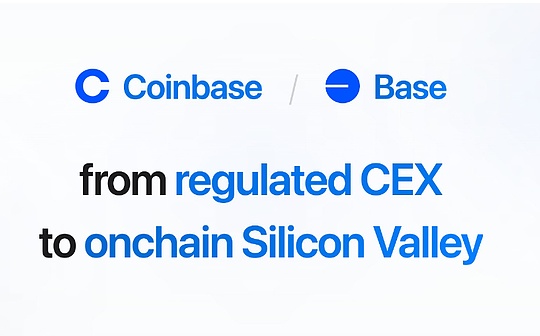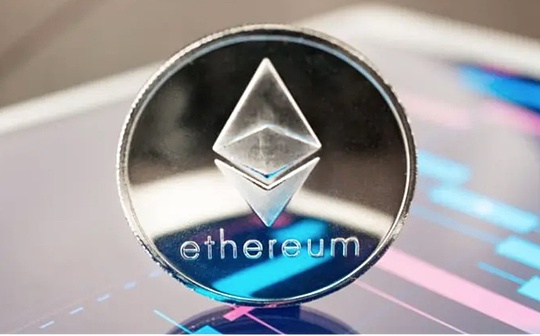
summary:
-
A decentralized application consists of multiple parts, but at present, only the core back -end logic runs on Ethereum. Other parts such as the front -end code are also deployed from Ethereum.At the same time, it also includes many data that has not been chained, so most DAPP cannot fully inherit the security of Ethereum, far from reaching an idealized state.
-
There are two main reasons for the above problems: one is that Ethereum does not provide developers with corresponding front -end standards and tools, and the other is that the cost of stored data on the chain is too high.
-
In order to provide decentralized front -end standards, the Ethstorage team proposed a web3: // access protocol,Provide developers with a complete set of standards and tools for deploying and accessing the front -end code through smart contracts, and even the standards of file system systems. It has now become a formal standard for Ethereum.
-
In order to reduce the storage cost of the data on the Ethereum chain, the Ethstorage team has developed the second -level storage protocol Ethstorage.Using Pora (Proof of Random Access) and zero -knowledge proves, while inheriting the safety of Ethereum, the storage overhead is greatly reduced.
Thank you: Thanks to Faust from Geek Web3, zhixiong Pan of Chainfeeds, Bruce of LXDAO, qi zhou, LUN DENG of ETHSTORAGE.
The background and problem of decentralized DAPP
The vision of Ethereum is to become a world computer, and the applications built on it will inherit its security.Developers only need to deploy once, and the application will always run on Ethereum, and no entity can review or maliciously manipulate it.
But does the current decentralized application DAPP reach the above goals?To answer this question clearer,We need to deconstruct a DAPP application to see which parts it includes, and then analyze the degree of trust in each part.Come to the final conclusion.
Under normal circumstances, a decentralized DAPP will include front -end interface, back -end server, and database.When the user visits the front -end interface, the front -end content will be loaded through the browser and domain name service.in:
-
Front end and domain name service:Most of them have not been deployed and visited through smart contracts. The characteristics provided by the blockchain are not reflected in the front end of the front end.
-
Back -end server: Some of them are implemented by smart contracts, and some computing -intensive tasks cannot be fully chain.
-
database:Some of them are implemented by smart contracts. Due to the high storage costs on the chain, DAPP still uses a chain storage solution under the large amount of data.
>
Through the above analysis, you can seeThe current decentralized DAPP only obtains the protection of Ethereum through smart contractsThe Ethereum system is far from realizing the original “decentralized world computer” vision.
At the end of 2023, Vitalik reviewed the development of Ethereum and wrote an article “Make Ethereum Cypherpunk Again”, which discussed how the Ethereum community should return to the concept of password punk.In the text, he summarized the values that Ethereum or even larger WEB3 communities should adhere to, and mentioned a very important point:
Decentralized applications should be reduced to dependence on any single subject. Even if the core developer of DAPP disappears permanently, the application can continue to operate.
>
It can be seen that Vitalik has similar expectations for how to build decentralized applications.Let’sThe problems faced by each component in decentralized DAPP will be analyzed in detail, Discuss how to improve it.
Front -end and domain name service
Among several components of decentralized applications, the level of front -end and domain name services is the most serious.At present, most of the front -end DAPP uses a central server. The project party can modify the front -end code at any time. It does not need to be governed by the community, and it is not limited by time locks.Far.
Hackers can invade the server to modify the front -end code, and DAPP users will lose assets because of using the malicious front end.This problem repeatedly appeared in the last DEFI SummerWe can’t help asking: Why can’t the front end deploy on Ethereum like the back end, so that the modification behavior can take effect through community governance and time lock?
>
Please think about it,If Uniswap’s development team will not pay for their front -end servers and domain name services one day, then how will Uniswap users and LP use UniswapIntersection
Most users do not know how to bypass the front -end and smart contract interaction. Although Uniswap has tried to upload its front end to IPFS, IPFS and Ethereum are different networks, which are completely different in reliability and trust.It is worth mentioning,IPFS’s content access speed is very slow. Now most users are still interacting with the front end of Uniswap on the centralized serverEssence
In addition, becauseThe main operating subject of the Uniswap front end is Uniswap Labs. In order to cater to the supervision, they increased the review of the token list.This is contrasting with the smart contracts they deployed on Ethereum, because no one can modify the smart contract at will.Therefore, the TOKEN, which is reviewed at the front end, can still be interactive at the contract level, which shows that the importance of the code on the chain of the code on the chain of the campaign.
Back -end server
Because EVM can provide Turing’s complete execution environment, most of the back -end logic can be executed on the Ethereum chain. We can say that the application of smart contracts can fully inherit the security of Ethereum.Just due to cost, someCalculating dense tasks cannot be performed directly on the chainEssence
For this problem, the more exploration is now using ZK or OP.The calculation is transferred to the chain to complete. The Ethereum chain only confirms the calculation results, so as to expand the capacity at the calculation levelEssenceSome AI -related projects have pushed this method to the extreme. I hope that the super -computing dense task such as AI models is linked to the blockchain, which is worthy of our close attention.
database
For databases, EVM originally supported key values to /kV storage (Key Value Store), which can cover a lot of usage scenarios, but the core problem is that the cost of storage on the chain is too high.
To what extent?In the case of GAS Price for 10GWei, the data of 1GB of 1GB on the chain requires more than 6,200 ETH, more than 20 million US dollars!Obviously, the storage cost has become the core issue of database decentralization.
We might think whether we can use a method that is similar to the above calculations to expand the capacity to expand capacity.That is, under the chain storage, the storage effect on the chain is verifiedEssenceWe will follow this idea in detail.
After analyzing the above -mentioned DAPP components, we found that only by allowing each part of the DAPP to be safe and trustworthy, as a whole to trust, can we truly become a decentralized DAPP.As a DAPP’s operation and hosting platform, Ethereum needs to provide developers with corresponding solutions in order to bred an application ecosystem that conforms to the Ethereum vision.
DAPP’s Trust Solution
AroundHow to make DAPP completely deploy and access based on Ethereum, the Ethstorage team proposed two sets of solutions:
-
web3: // Access protocol:Solve the problem of how to use smart contracts to deploy and access the front -end code, and even the file system system.
-
ETHSTORAGE second -layer storage protocol:While inheriting the security of Ethereum, the storage overhead has been greatly reduced.
web3: // access protocol
Web3: // can be understood as a decentralized version of http: //, similar to the designed server IP address or domain name to access the centralized resource in the URL of HTTP.Come to visit the resources stored on it.
We can deploy all the front end of a website into a smart contract and access it through web3: //!You can compare the difference between the two:
>
at presentWeb3: // has become the formal standard of Ethereum (ERC-4804)If you want to learn more about the contents of the web3: // access the protocol, you can access its official website.In order to better do file management in smart contracts, we proposed ERC-5018, which simulated a set of file system interfaces in the smart contract, so that through ETHFS-CLIGo to a smart contract and visit this website through Web3: //.
If you are interested, you can complete a simple decentralized application deployment and access according to the tutorial.
With the web3: // access protocol, we can really make the DAPP front end also have the attribute of “Code is Law”EssenceFor developers, once deployment, this front end will be permanently executed.Imagine if Uniswap Labs also deployed its front end to Ethereum, then even if the team wants to review and restrict users at the front -end layer, it cannot prevent people from using its front end deployed on Ethereum.
Of course, after solving the problem of feasibility, we also realized that the cost of stored a large amount of data on the chain will be very high, so that developers face trouble when deploying the front end of the chain.We further developed the Ethstorage 2 -layer storage protocol, while inheriting the security of Ethereum, it greatly reduces storage overhead.
ETHSTORAGE second -layer storage protocol
ETHSTORAGE protocol consists of a smart contract deployed on Ethereum and a storage node in the Layer2 network. Among themThe smart contract provides key value storage, and the storage node on the second floor is responsible for storing the data itselfEssence
The user uploads the data to be stored to Ethereum through the BLOB of EIP-4844. Ethstorage smart contracts will only record the hash of data in Blob, thereby effectively reducing the storage cost.
at the same time,The storage node on the second floor will download the corresponding BLOB data to the local disk, and use Pora (Proof of Random Access) and ZK to submit the storage certificate to the contract on Ethereum for verification.The contract needs to confirm whether the ZK certification uploaded by the storage node can be confirmed to the upper number through the Blob hash at the previous record to confirm that the storage nodes in the second layer of the network really store these data.
The specific process is as follows:
>
For developers, the interface of its uploading data and obtaining data is very simple:
>
Application developers can read and write large block data through the contract interface provided by Ethstorage. The writing cost is about one thousandth of the thousandths of the data storage data on the chain.Therefore, ETHSTORAGE not only supports the front -end of the deployment of the chain, but also provides a lower cost solution for a wider range of key -value storage database operations.
At present, ETHSTORAGE has obtained the official Grants of Ethereum, and has deployed a public test network in Sepolia. Welcome everyone to join.
Summary and outlook
Most of the important components of DApps, such as the front end and the database, are not deployed at Ethereum, and cannot inherit the security of Ethereum, resulting in the application as a whole that cannot be permanently enforced, anti -review, and can be governed.
ETHSTORAGE proposes two solutions to this problem: web3: // access protocol solves the problem of deployment and access to the front -end using smart contracts; Ethstorage second -layer storage protocols solve the problem of excessive storage costs.
In order to realize the original vision of Ethereum, we think it will evolve into a decentralized web server. The decentralized application in the ecology will deploy all its components to Ethereum. Whether it is back -end code, front end or data,Once deployed, the code can be permanently run, and the data can be permanently accessed, becoming a real UNSTOPPABLE DAPP.
ETHSTORAGE Public Test Network is conducting the second incentive activity. Interested community partners can complete their first UNSTOPPABLE DAPP deployment and access according to Guide!







